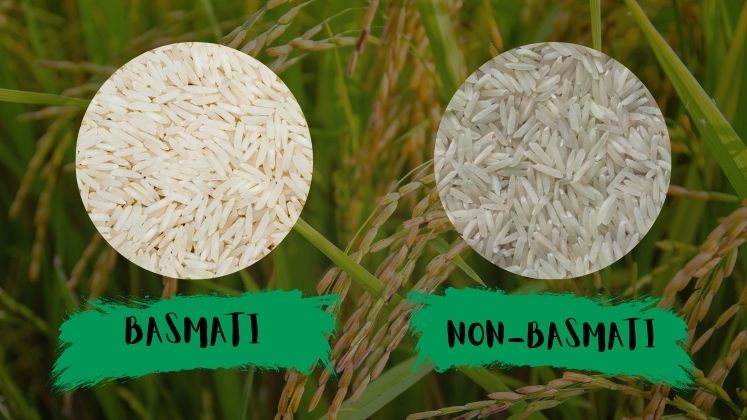The Global Demand for High-Quality Rice
Food is not just about the taste anymore. Now, it is the era of mindful and quality eating. Across the globe, consumers and food industries are becoming increasingly conscious of what they eat.
For many, rice is not just a staple; it’s a symbol of tradition, quality, and taste. In international markets, where competition is fierce and quality expectations are high, only premium rice varieties can survive.
Why International Buyers Prefer Pakistani Rice
Pakistan is home to some of the finest rice varieties in the world, especially the Basmati. Our country offers:
- Naturally aromatic grains
- Ideal climatic conditions for rice cultivation
- Advanced post-harvest technology
- Rich agricultural heritage
High-end brands, five-star hotels, and food retailers globally seek Pakistani rice for its taste, aroma, and purity. Whether it’s a biryani in Dubai or sushi in London, Pakistani rice adds value to every dish.
Understanding Basmati vs Non-Basmati Rice
| Feature | Basmati Rice | Non-Basmati Rice |
|---|---|---|
| Grain Length | Long, slender | Varies (medium to long) |
| Aroma | Naturally aromatic | Mild or no aroma |
| Texture When Cooked | Fluffy, separate grains | Sticky or soft, depending on the variety |
| Popular Uses | Biryani, pulao, fine dining | Everyday meals, bulk cooking |
| Price Point | Premium | Economical |
| Major Markets | Middle East, Europe, USA | Africa, Asia, and domestic markets |
| Shelf Life | Longer with proper storage | Moderate |
To truly appreciate Pakistan’s rice export success, it’s important to understand the difference between Basmati and non-Basmati rice. Both types are vital for Pakistan’s export economy, one for value, the other for volume.
Pakistan’s Growing Rice Export Success
According to The Express Tribune, Pakistan has seen a 20-month growth streak in food exports, hitting $5.75 billion. Rice plays a huge role in this boom.
Reasons for this boom are mentioned below:
- The post-2022 flood has improved the productivity of the yields.
- Revised Minimum Export Prices (MEPs) incentivized quality.
- High global demand amid reduced competition from other regions
- Greater adoption of coarse rice varieties in new markets
Pakistan is now one of the leading global exporters of coarse (non-Basmati) rice and continues to dominate in the Basmati premium segment.
Exploring the Potential of Rice Exports
Rice is Pakistan’s second most important staple after wheat, and the second-largest export commodity after textiles. With over 8% share in the global rice trade, Pakistan is making consistent strides despite challenges.
Opportunities:
- Growing demand in Africa and Southeast Asia for non-Basmati
- High-end demand from Europe, the Middle East, and the US for Basmati
- Government initiatives to improve export incentives
- Adoption of precision agriculture and digital traceability
Challenges:
- Logistics and infrastructure bottlenecks
- Need for value addition (e.g., parboiled or organic rice)
- Global price volatility
What Makes Pakistani Rice Unique?
It’s not just about cultivation, it’s about what happens after harvesting.
At Meskay & Femtee (MFTC), we ensure the sustainable production of rice. Post-harvest, our rice undergoes the most advanced post-harvest care.
- Paddy Cleaning & De-Husking: Removing all impurities for a higher yield
- Grain Polishing & Grading: Ensuring uniform size and texture
- Moisture Control & Storage: Enhancing shelf life and preventing spoilage
Our state-of-the-art milling and packaging systems guarantee consistency, purity, and premium quality in every grain.
Types of Rice We Export, Including Varieties from MFTC
At Meskay & Femtee, we specialize in selling only the best-standard varieties of rice to cater to international dining:
- Long-Grain Rice
- Medium-Grain Rice
- Short-Grain Rice
Strategic Significance of Basmati and Non-Basmati Rice in Export Growth
Unlike Basmati rice, which is linked to luxury and tradition, non-Basmati rice is in high demand in many developing countries. This demand plays a big role in the rising rice exports from Pakistan. Both regular and high-end buyers are creating new opportunities for Pakistan’s rice industry. Global scope can help make the industry more diverse and active.
Pakistan’s recent rice export success is due to smart choices of where to export, strict quality checks, and better systems after harvesting. The country earned billions from rice exports, with both Basmati and non-Basmati rice playing key roles. Rice has now become a major part of Pakistan’s farming economy.
Conclusion: Why Choose MFTC as a Top Rice Exporter from Pakistan
Meskay & Femtee is proud to be Pakistan’s largest rice exporter, delivering quality, volume, and reliability. Our Naubahar rice represents the pinnacle of Pakistani agricultural excellence.
- 100% export-grade rice
- Strict quality control
- Decades of industry expertise
- Trusted by global importers in 150+ countries.
- Seamless supply chain, from farm to port.
Whether it’s Basmati’s rich aroma or non-Basmati’s versatility, MFTC is your trusted partner for high-quality Pakistani rice exports.
FAQs
-
What is the difference between Basmati and Non-Basmati rice?
Basmati has a longer grain and natural aroma, while non-Basmati varieties vary in shape, size, and texture.
-
Why is Pakistani rice preferred globally?
Pakistani rice is known for its aroma, grain quality, and consistency in cooking, highly valued by chefs and food experts worldwide.
-
Which countries import Pakistani rice?
Major importers include the UAE, Saudi Arabia, the UK, Kenya, Malaysia, and several European nations.
-
What makes MFTC rice high quality?
We follow advanced post-harvest and milling processes, ensuring grain purity, hygiene, and long shelf life.
-
How can I partner with MFTC for rice supply?
To explore our products and connect with our sales team directly via info@mft.com.pk.


Leave a Reply